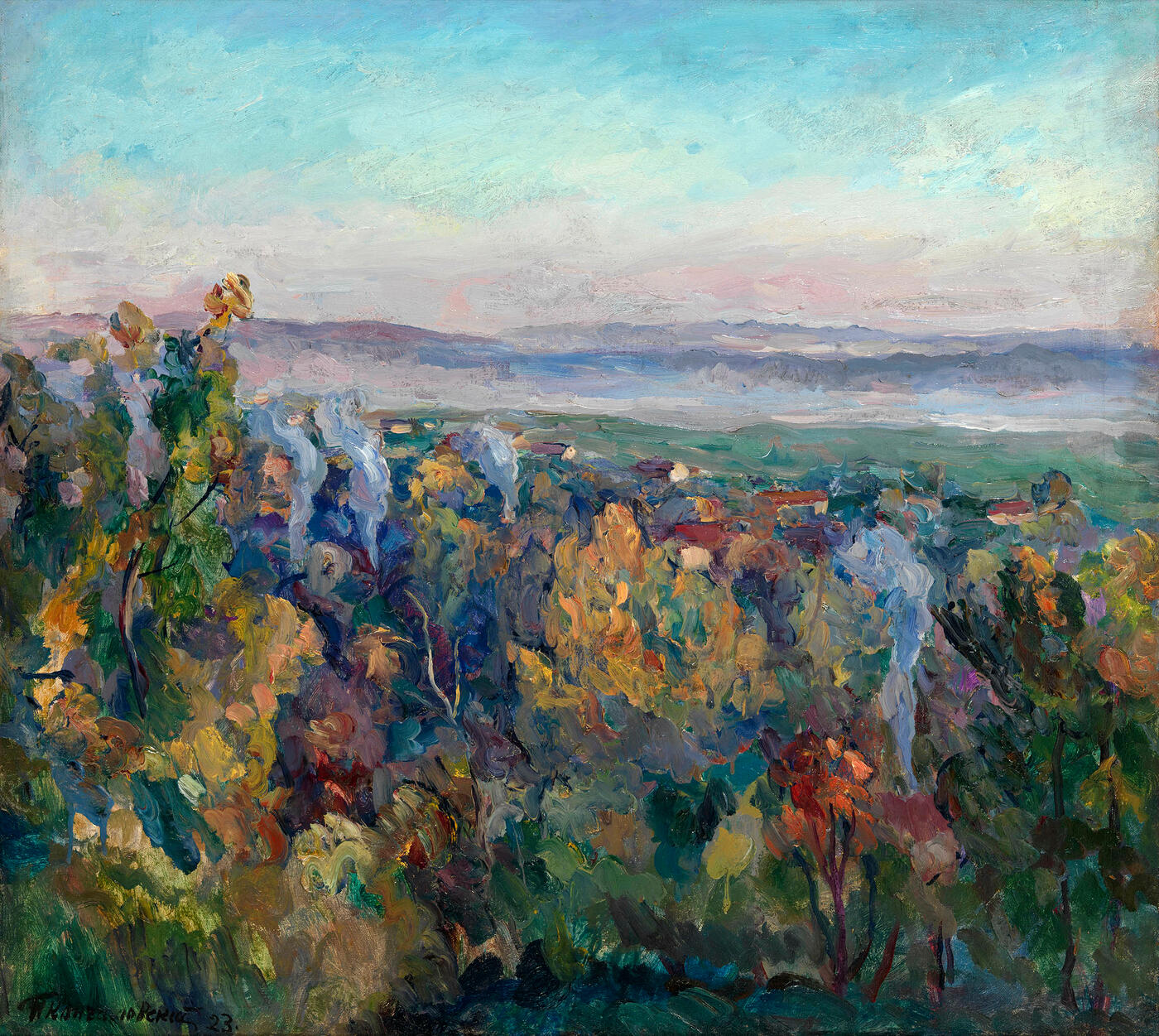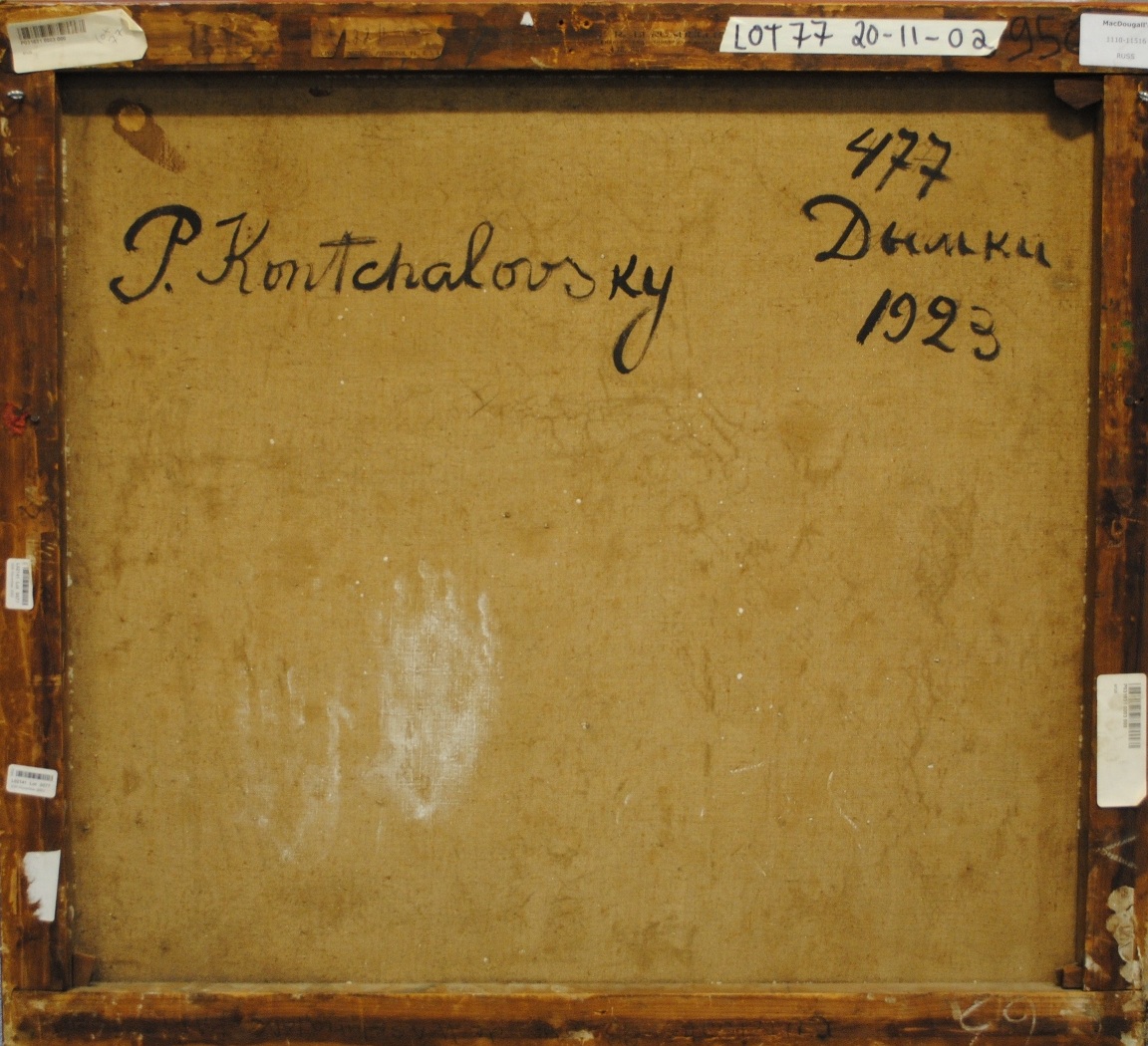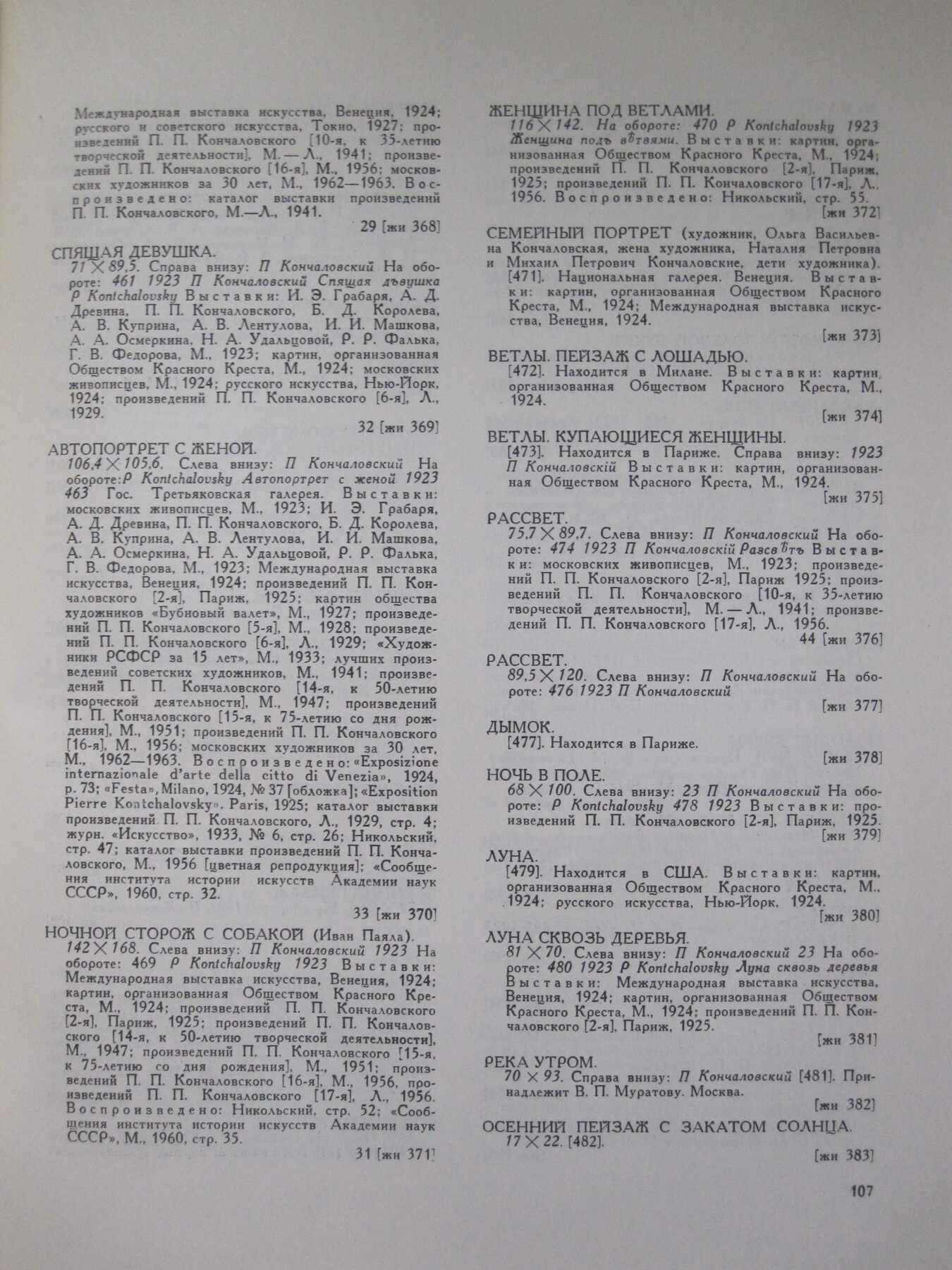MacDougall's Russian Art Auctions 8-9 June 2011
8 June 2011

91. KONCHALOVSKY, PETR (1876-1956)
Smoking Chimneys, signed and dated 1923, also further signed, titled in Cyrillic "Dymki", numbered "477" and dated on the reverse.
Oil on canvas, 80 by 88.5 cm.
200,000-300,000 GBP
Provenance: Anonymous sale; Russian Pictures, Sotheby's London, 20 November 2002, Lot 77.
Private collection, UK.
Exhibited: 26th Annual International Exhibition of Painting, Carnegie Institute, Pittsburgh, USA, 1928 (label on the stretcher).
Literature: P. Konchalovsky, Khudozhestvennoe nasledie, Moscow, Iskusstvo, 1964, p. 107, listed 'zhi 378' as Dymok.
Konchalovsky spent the summer and early autumn of 1923 in the village of Krylatskoe, near Moscow, on the Moscow River. This is most probably where the landscape Smoking Chimneys was painted. In Krylatskoe, as at Abramtsevo two years earlier, the artist was carefully studying the natural environment, revising his conception of analytical landscape. The influence of Cézanne gradually yielded to the influence of Classicism.
As well as issues relating to the structure of landscape, Konchalovsky was at this time especially interested in motifs relating to movement in nature - the wind that bends trees and chases clouds, the light that streams through a curtain of leaves, the colour gradations of aerial planes, the breath of air that fills the space of the landscape.
New features appeared in Konchalovsky's painting style, which was characterised by the introduction of a tonal painting system, an Impressionist dynamic to the brushwork, and by a striving to convey the illusive space, air and play of the sun's rays. At the same time Konchalovsky retained his preference for intensely resonant colour, and he conceived the composition of Smoking
Chimneys as, primarily, a decorative combination of splashes of red, yellow, green, blue and pink. The landscape is built up from a rich multiplicity of colour contrasts and, as a result, not only do the trees and the plumes of smoke seem to thread into the sky but, in spite of the autumn season, nature herself appears life-affirming and full of vigour.
His professional move towards naturalistic reproduction and the panoramic sweep of his landscape meant the artist had to change his artistic language for a more faithful rendering of the uniformity and continuity of the spatial movement which acts upon all elements of the landscape. Konchalovsky ensures that when taking in the picture as a whole, the viewer's gaze does not get caught up by the individual components of the composition (the trees, houses, hills): instead it registers them as a single living matter. Even in hisenthusiasm for pleinairism, the artist does not abandon the physical world in his paintings which had been so dear to him, accentuating the materiality, solidity, corporality of the objects depicted.
His trees and roofs form such a solid mass of colour that there are practically no discontinuities of light in their dense structure, and even the smoke, pouring from the chimneys of the little houses spread out below, does not so much create a split in the spatial volume as facilitate the material expressiveness of the atmosphere.
Of the natural elements - earth, trees, sky - which Konchalovsky drew on in his earlier Cézannist period, only trees and sky remain in Smoking Chimneys. It is pertinent here to quote the words of Cézanne's friend Emile Bernard who referred to Konchalovsky as
"the only follower of Cézanne who really understood him and was able to depart in time to move towards Classicism." For it was in landscapes such as Smoking Chimneys that Konchalovsky succeeded in acquiring the basis of a new unity between real life and painting, creating a rich reserve for his quest to find a plastically expressive natural form.


Notes on symbols:
* Indicates 5% Import Duty Charge applies.
Ω Indicates 20% Import Duty Charge applies.
§ Indicates Artist's Resale Right applies.
† Indicates Standard VAT scheme applies, and the rate of 20% VAT will be charged on both hammer price and premium.